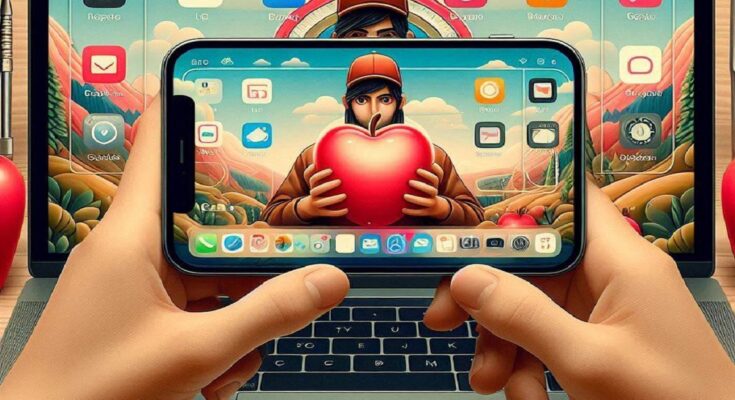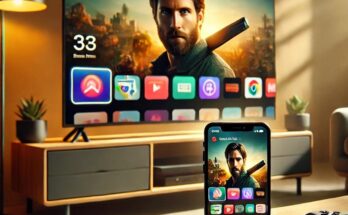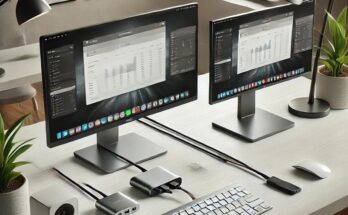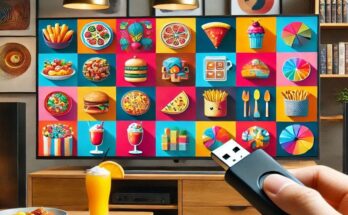Imagine seamlessly sharing photos, videos, or even your entire iPhone screen on the larger display of your laptop. This dream becomes reality with a few simple steps, allowing you to enhance presentations, collaborate on projects, or even enjoy mobile games on a bigger screen. Here’s a comprehensive guide on how to display your iPhone screen on your laptop, covering both Mac and Windows operating systems.
Compatibility Considerations
Before diving into the methods, it’s crucial to ensure compatibility between your iPhone and laptop. Here’s a breakdown of the primary mirroring functionalities and their compatibility considerations:
- AirPlay (For iPhones and Macs): This Apple-developed technology allows wireless screen mirroring between Apple devices. If you own both an iPhone and a Mac, AirPlay offers a user-friendly and seamless mirroring experience.
- QuickTime Player (For iPhones and Macs): Mac users can leverage the built-in QuickTime Player application for a wired mirroring solution.
- Third-Party Apps (For iPhones and Windows/Mac): Several third-party applications cater to screen mirroring across different operating systems. While offering flexibility, they might require additional installation and configuration steps.
Effortless Mirroring with AirPlay (iPhones and Macs)
If you own both an iPhone and a Mac, AirPlay provides the most convenient way to mirror your iPhone screen. Here’s how to get started:
- Wi-Fi Connection: Ensure both your iPhone and Mac are connected to the same Wi-Fi network. This is crucial for establishing a seamless connection for mirroring.
- Swiping Down the Control Center: On your iPhone, swipe down from the top right corner of the screen (iPhone X and later models) or swipe up from the bottom of the screen (iPhone 8 and earlier models) to access the Control Center.
- Locating Screen Mirroring: Look for the “Screen Mirroring” icon in the Control Center. It might resemble a rectangle with an upward arrow on it.
- Selecting Your Mac: Tap on the “Screen Mirroring” icon. Your iPhone will automatically search for nearby compatible devices. Select your Mac from the list that appears.
- Passcode Confirmation (Optional): Depending on your Mac settings, you might see a passcode displayed on your Mac screen. To proceed with mirroring, enter this passcode on your iPhone.
- Mirroring Your Screen: Once connected, your iPhone’s screen will be mirrored onto your Mac. Everything you do on your iPhone, from browsing photos to playing games, will be displayed on the larger laptop screen.
Wired Mirroring with QuickTime Player (iPhones and Macs)
For a wired mirroring solution on Mac, you can leverage the built-in QuickTime Player application. Here’s what you’ll need:
- Lightning Cable: A Lightning cable is required to connect your iPhone to your Mac’s USB port.
- QuickTime Player: Locate the QuickTime Player application on your Mac. It’s usually found within the Applications folder.
Here’s how to set up wired mirroring with QuickTime Player:
- Connecting Your iPhone: Using your Lightning cable, connect your iPhone to your Mac’s USB port.
- Launching QuickTime Player: Open the QuickTime Player application on your Mac.
- Accessing File Menu: Navigate to the “File” menu located at the top of your Mac screen.
- Selecting New Movie Recording: Within the “File” menu, choose the option labeled “New Movie Recording.”
- Choosing Your iPhone as Camera Source: A dropdown menu will appear displaying available camera sources. Select your iPhone from this list.
- Mirroring Your Screen: QuickTime Player will now display your iPhone’s screen. Everything you do on your iPhone will be mirrored onto your Mac’s display.
Exploring Third-Party Apps (iPhones and Windows/Mac)
While AirPlay and QuickTime Player provide excellent solutions for Apple users, several third-party applications offer screen mirroring functionalities across different operating systems. These apps cater to users who might have a Windows laptop or prefer features beyond what built-in solutions offer. Here’s a look at some popular options:
-
LonelyScreen (Windows and Mac): This versatile app boasts compatibility with iPhones, iPads, and various computer operating systems. It allows you to mirror your iPhone screen wirelessly to your laptop. LonelyScreen offers a free trial with limitations, such as time restrictions and watermarks on recordings. Upgrading to a paid subscription unlocks additional features like:
- Recording your mirrored screen
- Using annotation tools while mirroring (drawing, highlighting, etc.)
- Higher resolution mirroring
-
ApowerMirror (Windows and Mac): Another popular choice, ApowerMirror, supports both wireless and wired mirroring across various platforms. This app caters to users who might prefer a wired connection for stability or those who lack a strong Wi-Fi network. ApowerMirror offers a free version with basic functionalities like screen mirroring. Upgrading to a paid version unlocks additional features like:
- High-definition recording of your mirrored screen
- The ability to control your iPhone from your computer (launch apps, adjust volume, etc.)
- Additional features like taking screenshots of your mirrored screen
Important Considerations for Third-Party Apps
Before downloading and installing any third-party app, it’s crucial to consider these factors:
- Security: Only download apps from reputable sources like official app stores (Apple App Store, Google Play Store, etc.). Read reviews and check app permissions before installation to ensure the app doesn’t access unnecessary data on your devices.
- Features: Identify the specific features you need in a mirroring app. Do you require recording capabilities, annotation tools, or high-resolution mirroring? Choose an app that caters to your specific needs.
- Free vs. Paid: Many third-party apps offer a free version with limited functionalities. Carefully evaluate these limitations before upgrading to a paid subscription.
Remember: This list includes just a few popular options. Numerous other third-party mirroring apps are available. Explore and compare features, pricing, and user reviews to find the app that best suits your requirements. With a little research, you can leverage the power of third-party apps to seamlessly mirror your iPhone screen onto your laptop, regardless of your operating system.




